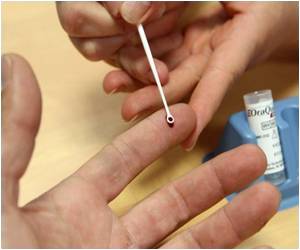A molecule embedded in membrane of human liver cells allows the entry of hepatitis C virus, reveals research.

An estimated 4.1 million Americans are infected with hepatitis C virus, or HCV, which attacks the liver and leads to inflammation, according to the National Institutes of Health. Most people have no symptoms initially and may not know they have the infection until liver damage shows up decades later during routine medical tests.
Previous studies showed that cholesterol was somehow involved in HCV infection. The UIC researchers suspected that a receptor called NPC1L1, known to help maintain cholesterol balance might also be transporting the virus into the cell.
The receptor is common in the gut of many species -- but is found on liver cells only in humans and chimpanzees, says Susan Uprichard, assistant professor in medicine and microbiology and immunology and principal investigator in the study. These primates, she said, are the only animals that can be infected by HCV.
Uprichard and her coworkers showed that knocking down or blocking access to the NPC1L1 receptor prevented the virus from entering and infecting cells.
Bruno Sainz, Jr., UIC postdoctoral research associate in medicine and first author of the paper, said because the receptor is involved in cholesterol metabolism it was already well-studied. A drug that "specifically and uniquely targets NPC1L1" already exists and is approved for use to lower cholesterol levels, he said.
Advertisement
They used the drug to block the receptor before, during and after inoculation with the virus, in cell culture and in a small-animal model, to evaluate the receptor's role in infection and the drug's potential as an anti-hepatitis agent.
Advertisement
The study, Uprichard said, opens up a number of possibilities for therapeutics.
Hepatitis C is the leading cause for liver transplantation in the U.S., but infected patients have problems after transplant because the virus attacks the new liver, Uprichard said.
While current drugs are highly toxic and often cannot be tolerated by transplant patients taking immunosuppressant drugs, ezetimibe is quite safe and has been used long-term without harm by people to control their cholesterol, Uprichard said. Because it prevents entry of the virus into cells, ezetimibe may help protect the new liver from infection.
For patients with chronic hepatitis C, ezetimibe may be able to be used in combination with current drugs.
"We forsee future HCV therapy as a drug-cocktail approach, like that used against AIDS," Uprichard said. "Based on cell culture and mouse model data, we expect ezetimibe, an entry inhibitor, may have tremendous synergy with current anti-HCV drugs resulting in an improvement in the effectiveness of treatment."
Source-Eurekalert















